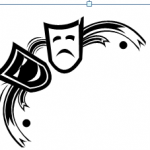 Debate continues to swirl around what diagnosis to apply to children who seem to be chronically and, at times, explosively irritable. Since some influential papers in the 1990s, many of these children have now been given the diagnosis of Bipolar Disorder and subsequently treated as such with mood stabilizers and antipsychotic medications. Increasing concern about this diagnostic application has been voiced both inside and outside the child psychiatry community. Longitudinal data, including a study done here at the VCCYF (Althoff et al., 2010), suggests that while the majority of these children continue to have severe emotional behavioral problems and wind up as adults with many psychiatric diagnoses, the vast majority do not convert to more classic presenting Bipolar Disorder.
Debate continues to swirl around what diagnosis to apply to children who seem to be chronically and, at times, explosively irritable. Since some influential papers in the 1990s, many of these children have now been given the diagnosis of Bipolar Disorder and subsequently treated as such with mood stabilizers and antipsychotic medications. Increasing concern about this diagnostic application has been voiced both inside and outside the child psychiatry community. Longitudinal data, including a study done here at the VCCYF (Althoff et al., 2010), suggests that while the majority of these children continue to have severe emotional behavioral problems and wind up as adults with many psychiatric diagnoses, the vast majority do not convert to more classic presenting Bipolar Disorder.
In response to some of this evidence, the DSM5 planning committee has introduced a new diagnosis for these youth. Originally called Temper Dysregulation with Dysphoria Disorder, its new proposed name is Disruptive Mood Dysregulation with Dysphoria (DMDD).
The Los Angeles Times recently ran a story on the controversy surrounding the new diagnosis.
One criticism of DMDD is that clinicians will not have a guide on how effectively to treat the condition without any historical precedent. To others, that is precisely the point – as a new diagnosis would hopefully foster its own research and clinicians would not have to apply inappropriately what knowledge there is on Bipolar Disorder.
Our own clinic has been conservative in the application of the Bipolar Disorder diagnosis and treatment to chronically dsyregulated youth while still trying to appreciate the magnitude of impairment that these problems can create for the entire family.
References
Althoff RR, Verhulst F , Rettew DC, Hudziak JJ, van der Ende J. Adult outcomes of child dysregulation: a 14 year follow-up study. J Am Acad Child Adolesc Psychiatry 49(11):1105-1116, 2010.

